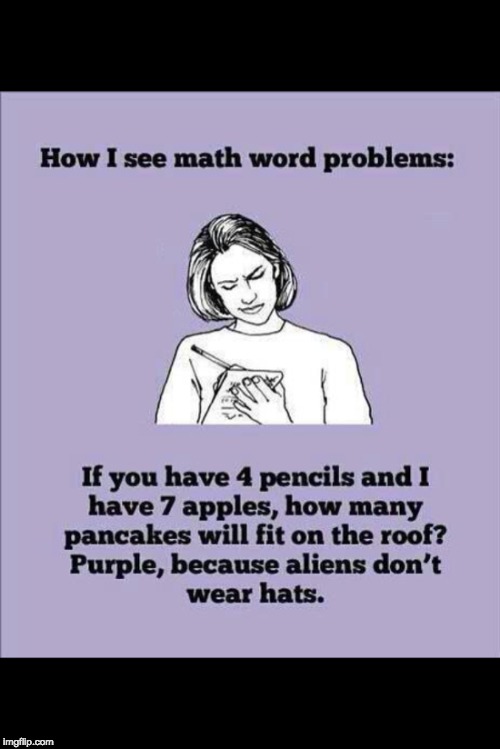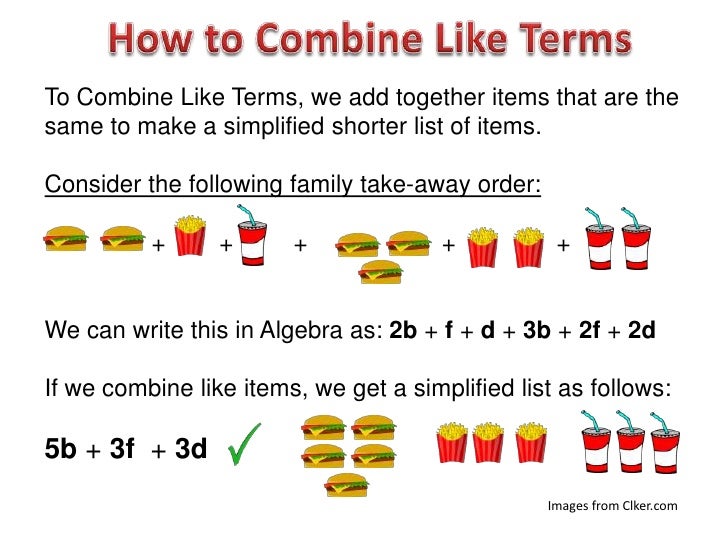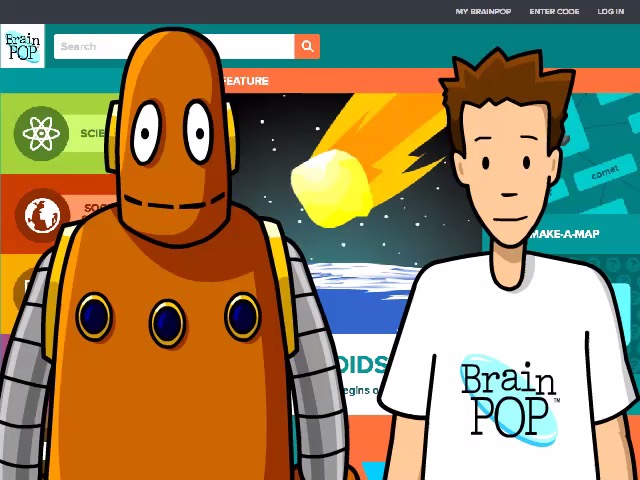Variable Expressions With More Than One Variable
 1
1
Once students have an understanding of variable expressions they will expand their knowledge by learning how and when terms in an expression can be combined. Last term in Special Education I observed a student in math class. I remember the lesson on combining like terms. I remember the teachers explanation of how we can't add apples and oranges together. Most of the students understood, but there were still several that questioned exactly what they were doing and why. Having a solid understanding of this concept will help students when they move on to solving algebraic equations.
Word Wall
Like Terms - Terms where the variables and their exponents are the
same.
4x and 15x -8y and 90y 5ab and 87ab
Combine Like Terms - The mathematical operation of adding or
subtracting like terms.
Commutative Property of Addition - Changing the order of the operation does not change the answer. example: a + b = b + a
Commutative Property of Addition - Changing the order of the operation does not change the answer. example: a + b = b + a
Simplify Like Terms
Students need to understand that variables are a representation for an unknown quantity. It is easy for them to see that the variable x is different from the variable y, and simple enough to explain to them that they are different and therefore they can not be added together. What happens when they see x and xy, or x²? They still need to understand that those variables are different and can not be combined.
Example: Take x, xy, and x², because the variables can have different values they cannot be seen as similar or like, and added together. If we say x = 4, then we would have 4, 4y, and 16.
Some students could say that apples and oranges are both fruit, so why can't they be combined? I found this slide presentation on LinkedIn Learning SlideShare. I liked the way they presented the topic. I think students can relate to this idea and could easily be to changed to reflect the classes interests.
Some students could say that apples and oranges are both fruit, so why can't they be combined? I found this slide presentation on LinkedIn Learning SlideShare. I liked the way they presented the topic. I think students can relate to this idea and could easily be to changed to reflect the classes interests.
 ²
² ²
²How to Combine Like Terms
- When given an algebraic expression, students should evaluate what is in the expression.
1. 5x + 2x 2. 10b - 5c + 2b 3. 10x² + 5x - 3x² - 7x
- Then they can rewrite the expression by grouping the like terms together. They can do this because of the commutative property of addition.
1. 5x + 2x 2. 10b + 2b - 5c 3. 10x² - 3x² - 7x + 5x
- Finally, add or subtract the like terms, simplifying the expression.
1. 5x + 2x = 7x 2. 10b + 2b - 5c = 12b - 5c 3. 10x² - 3x² - 7x + 5x =
7x² -7x
7x² -7x
Conclusion
I like the idea of using an example that the students can relate to. I believe with this approach, high-level word problems could be given to the students and they could set them up and solve them without much difficulty. The problem that I see happening next is working with adding and subtracting positive and negative integers. Students have a hard time remembering the rules of when to add and what to subtract. Hopefully, once they understand when terms can be combined, they will be able to regroup. We'll practice the rules of working with positive and negative terms next.
Sources
1 - https://imgflip.com/i/1pjnd7
2 - https://www.slideshare.net/bigpassy/combining-algebra-like-terms






 ¹
¹
